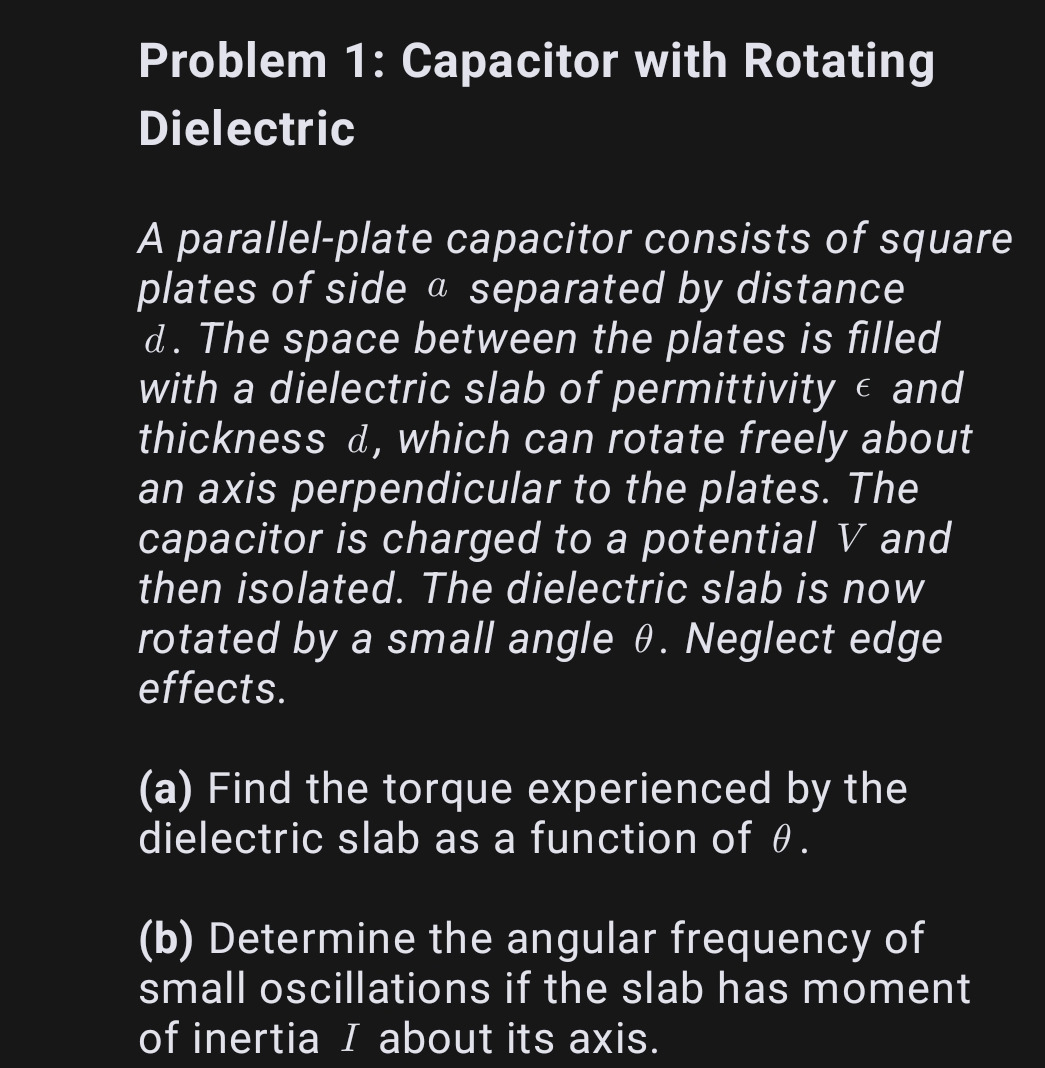Question
Question: A parallel-plate capacitor consists of square plates of side $a$ separated by distance $d$. The spac...
A parallel-plate capacitor consists of square plates of side a separated by distance d. The space between the plates is filled with a dielectric slab of permittivity ϵ and thickness d, which can rotate freely about an axis perpendicular to the plates. The capacitor is charged to a potential V and then isolated. The dielectric slab is now rotated by a small angle θ. Neglect edge effects.
(a) Find the torque experienced by the dielectric slab as a function of θ.
(b) Determine the angular frequency of small oscillations if the slab has moment of inertia I about its axis.

(a) The torque experienced by the dielectric slab as a function of θ is:
τ=−2dϵ0(ϵr−1)a2V2θ(b) The angular frequency of small oscillations is:
ω=2dIϵ0(ϵr−1)a2V2Solution
The solution involves calculating the capacitance as a function of the rotation angle θ, then finding the potential energy, and finally determining the torque and angular frequency. The area of overlap is approximated for small angles. The torque is calculated as the negative derivative of the potential energy with respect to θ. The angular frequency is found using the moment of inertia I and the restoring torque coefficient.
